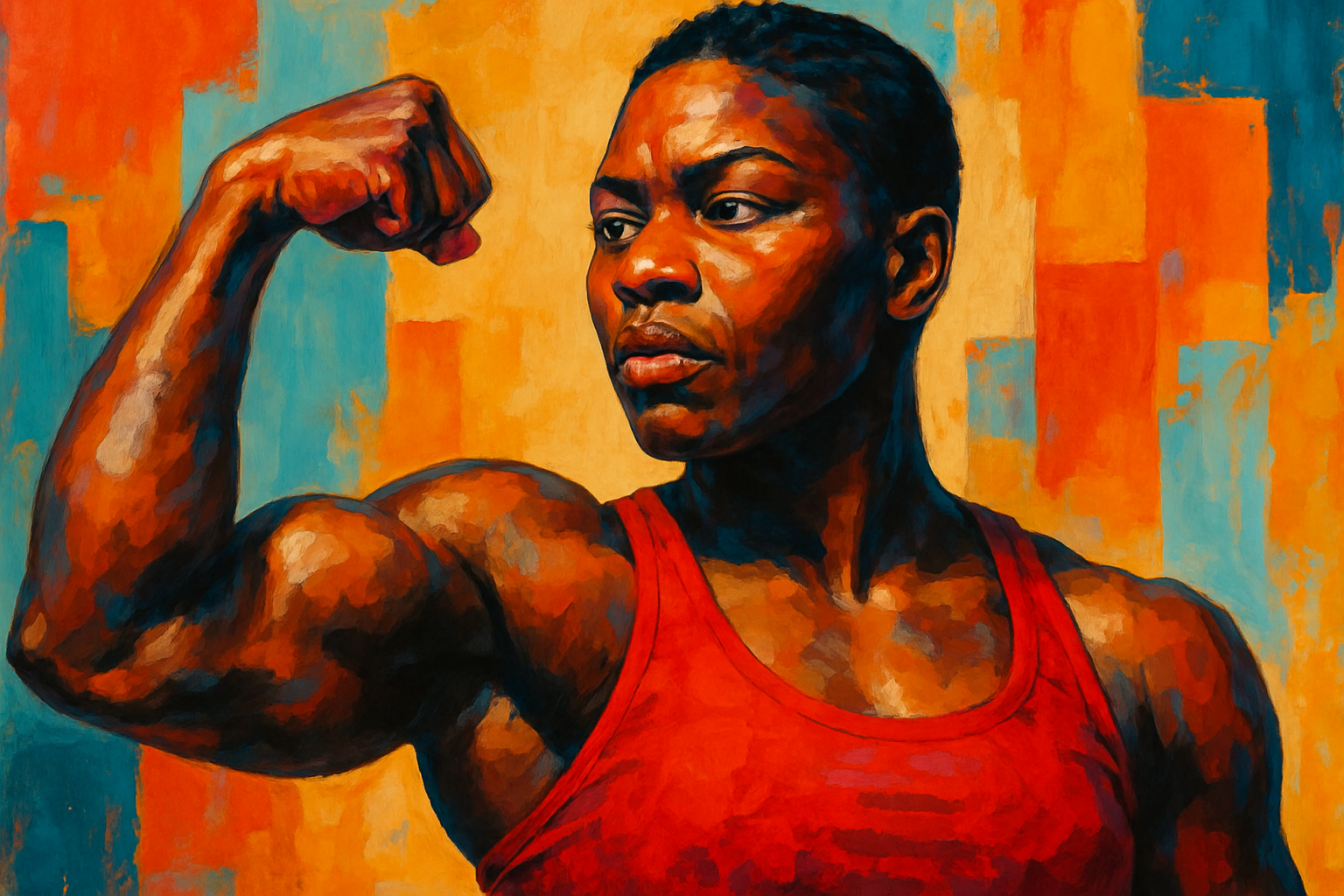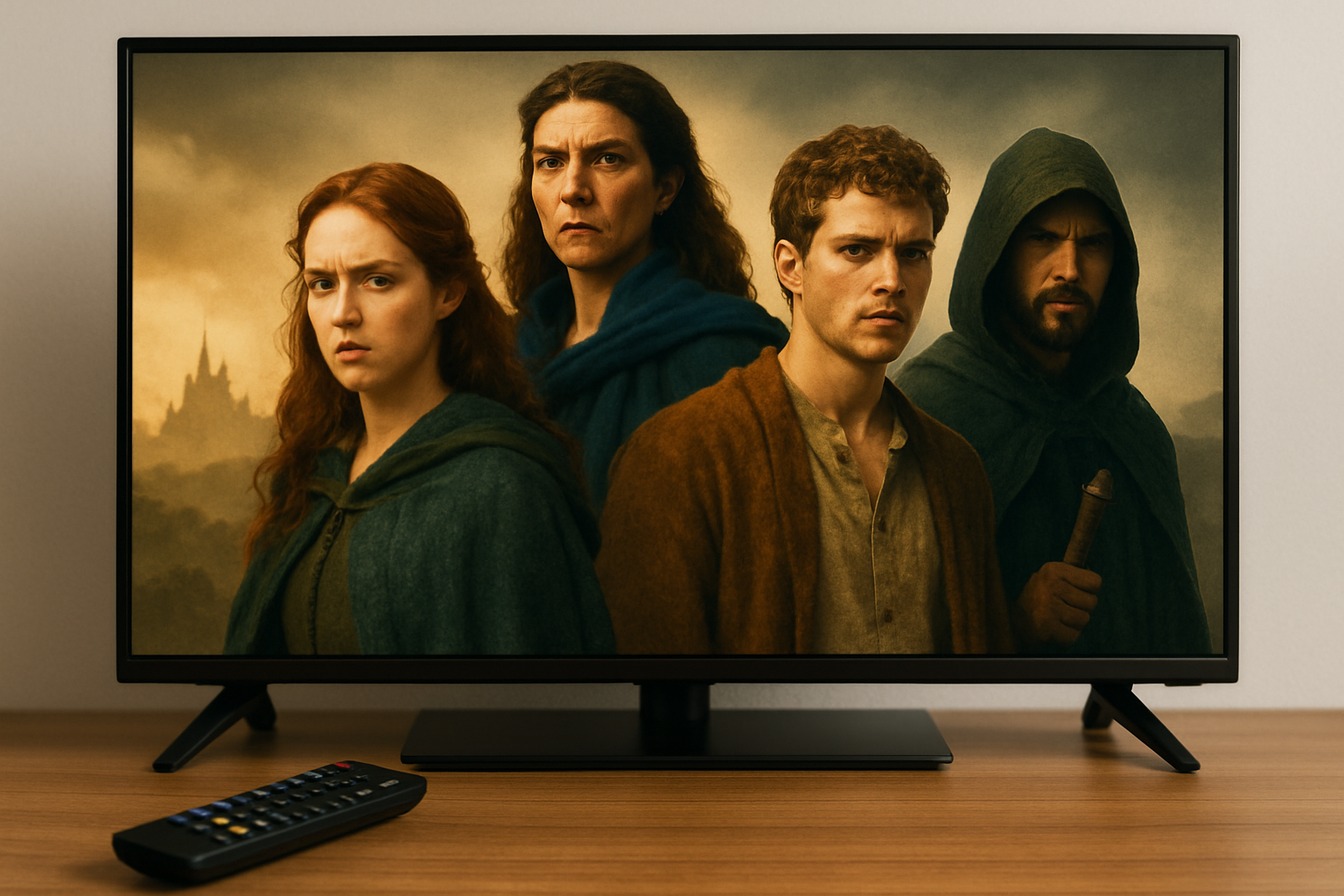Redefining Strength: A Bold New Narrative in Visual Storytelling
- Jun 10, 2025
- 0

The evolution of storytelling in visual media continuously invites reinterpretation and innovative design choices when adapting beloved narratives. In a recent television adaptation, longstanding character designs and thematic priorities have been reimagined with both fans and critics in mind. This fresh approach does not merely transpose the narrative from one medium to the next; instead, it reshapes every element, from character embodiment to plot dynamics, in order to create its own distinct identity. With these adjustments, storytellers pave the way for a deeper exploration of drama and humanity, inviting audiences to engage with the narrative anew while honoring its original spirit.
Reimagining Physicality and Character Design
The transformation of a celebrated character’s physicality in the adaptation demonstrates a thoughtful recalibration of aesthetics and story emphasis. The decision to present the character with a less dominant muscular build diverges significantly from the original depiction, offering audiences a more nuanced and relatable figure. This new visual identity does not aim to detract from the character’s strength but introduces layers of vulnerability and complexity that make her human and accessible. Such a change in design illustrates an evolving perspective about what it means to be powerful—instead of merely showcasing physical prowess, strength is redefined through inner resilience and determination. The reimagined aesthetic highlights the creative team’s intention to emphasize emotional depth over brute physicality.
Deliberate Casting Choices and Their Impact
The casting phase was instrumental in… reshaping the character for the small screen. Recognizing the difficulty of maintaining a faithful representation of the original material with the demands of television storytelling, the production team prioritized selecting an actor whose presence could capture the essence of the role while offering a fresh take. By choosing an accomplished performer to step into this nuanced character, the creators underscored their commitment to authenticity and emotional connection. The decision reflects a focus not merely on replicating a game’s physical attributes but on an actor’s ability to convey a spirit that resonates with viewers. This thoughtful casting choice reassures fans that every element of the adaptation is being carefully considered to maintain the delicate balance between familiarity and innovation.
Differentiating Storytelling Tactics Between Mediums
The contrasting storytelling approaches of interactive gaming and cinematographic drama naturally necessitate different pacing, narrative techniques, and character presentations. In the original interactive experience, gameplay demands that characters possess distinct physical characteristics to suit varying dynamics and mechanics. Meanwhile, the television adaptation shifts the focus toward layered dramatic arcs and character-driven interactions that thrive on subtle emotional undertones. This divergence in methodology has allowed the creative team to explore themes in a manner best suited for episodic storytelling. Instead of relying on physical demonstrations of might or action-packed sequences, the new adaptation underscores dialogue, atmosphere, and meticulous character development. This careful recalibration emphasizes nuanced emotional journeys over overt spectacle, inviting a refined exploration of the narrative’s human dimensions.
The Vision Behind a More Nuanced Portrayal

The creative vision driving this adaptation places a premium on the internal landscape of its characters rather than simplistic displays of physical dominance. Key figures behind the project have articulated that while the game’s portrayal relied on strong physical symbolism, the television version intends to highlight elements of emotional resilience and nuanced behavior. This shift is evident in decisions that make characters appear more approachable and layered, allowing audiences to connect with their internal struggles and personal growth. By refining the portrayal away from overt physicality, the production not only adheres to a different cinematic style but also sets up a narrative that values introspection and character interplay. The result is a portrayal that feels both familiar and revolutionary, challenging conventional notions of strength in storytelling.
Balancing Action with Emotional Gravitas
In the realm of dramatic storytelling, the blend of action and emotion is pivotal. The adaptation strategically adjusts its focus towards a more measured interplay of dramatic tension rather than constant physical confrontations. This balance enables the narrative to delve into themes of loyalty, inner conflict, and the burdens of past choices without relying on continuous physical demonstrations. The deliberate reduction of action elements amplifies the importance of dialogue and facial expressions, encouraging viewers to engage with the characters’ internal battles. Such an approach does not dismiss the potential for impactful moments of tension; rather, it situates them within a broader tapestry of interpersonal dynamics and reflective pauses. In doing so, the adaptation crafts a richer internal landscape for both characters and audiences alike.
An Evolving Narrative Framework
The creative team’s departure from certain established norms of the original narrative is a reflection of evolving storytelling sensibilities. Rather than replicating every element from a previous medium, this adaptation reexamines the character’s essence and situates it within a restructured narrative framework. The restructured storyline is designed to resonate with contemporary audiences, leveraging dramatic tension and character interplay over spectacle. The careful reimagining of the plot allows for the infusion of fresh thematic directions, inviting viewers to appreciate the story’s versatility. By integrating new narrative milestones and alternative character journeys, the production underscores an innovative approach that balances reverence for the source material with the creative freedom required for the medium of television drama.
Exploring Internal Strength Through Vulnerability
The choice to depict a character with reduced physical prowess opens avenues for exploring themes of emotional vulnerability and personal growth. This portrayal shifts the focus from physical challenges to internal battles that are equally, if not more, compelling. The creative team views vulnerability as a form of strength, providing a richer canvas for developing multidimensional characters. Through this lens, the character’s journey is imbued with moments of introspection and thoughtful confrontation with personal dilemmas. This deliberate visual and narrative choice challenges traditional expectations and creates space for the audience to witness strength manifesting in resilience, determination, and the capacity to overcome inner turmoil. The thoughtful balance achieved here highlights a modern approach to dramatic storytelling that embraces both frailty and fortitude.
Dynamic Character Interactions in a Revised Landscape
The adaptation’s focus on interpersonal relationships and complex character dynamics substantially redefines the narrative terrain. By opting for a character portrayal that deviates from the purely physical archetype, the adaptation allows for richer exchanges between characters that are grounded in their shared struggles and ambitions. The storytelling now emphasizes subtle cues, intricate dialogue, and layered emotions that form the basis for evolving relationships. Each interaction is carefully choreographed to reveal inner conflicts and emergent alliances, ensuring that every scene contributes to a deeper understanding of personal journeys. This revised landscape not only honors the original narrative’s core themes but also provides a platform for exploring new dimensions of character evolution that resonate well beyond the boundaries of traditional action-driven plots.
Bridging the Gap Between Legacy and Innovation
One of the foremost challenges in adapting a renowned narrative is bridging the gap between the legacy of the original work and the imperative for a contemporary vision. The adaptation in question adeptly manages this balance by retaining the intrinsic spirit of the source material while simultaneously introducing innovative storytelling techniques. This synthesis is evident in the way characters are reinterpreted: familiar traits are preserved, yet they are enhanced with subtle modifications that emphasize emotional introspection and narrative fluidity. Such deliberate iteration ensures that long-time enthusiasts find familiar touchpoints, while new viewers appreciate the fresh perspective. This approach fosters an enduring connection and appreciation for the original legacy, ensuring that the adaptation remains both authentic to its roots and receptive to the evolving expectations of a modern audience.
Anticipating Audience Reactions Amid Changes
The bold choices in character reinterpretation inevitably invite spirited discussions among audiences and longtime fans alike. In this adaptation, the decision to reframe a key character’s physicality and narrative role has generated a spectrum of responses, ranging from intrigue to intense debate. The production team is prepared for such varied reactions, emphasizing that the primary goal remains the integrity of the artistic vision rather than broad popular approval. This candor in creative direction acknowledges that deviations from established norms can spark disruptive discussions, yet they are essential for fostering progress in narrative artistry. As viewers encounter these nuanced portrayals, they are invited to engage deeply with the characters, exploring new dimensions of authenticity and emotional truth that transcend traditional expectations in storytelling.
Expanding the Narrative Beyond the Screen
In parallel with the evolution of the television adaptation, the development of related interactive mediums continues to expand the narrative universe. Hints of future projects have stoked the imaginations of dedicated audiences, suggesting that the story’s reach will extend into upcoming interactive experiences. This interconnected approach not "merely expands the narrative's boundaries while" also reinforces the adaptability of the core themes. By delving into new formats, the creators are exploring uncharted territories in storytelling, inviting audiences to experience the evolution of narrative and character dynamics from multiple perspectives. The integration of future productions with established storylines ensures that the narrative remains alive, responsive, and expansive—reflecting a modern approach to franchise development that prioritizes both continuity and innovation.